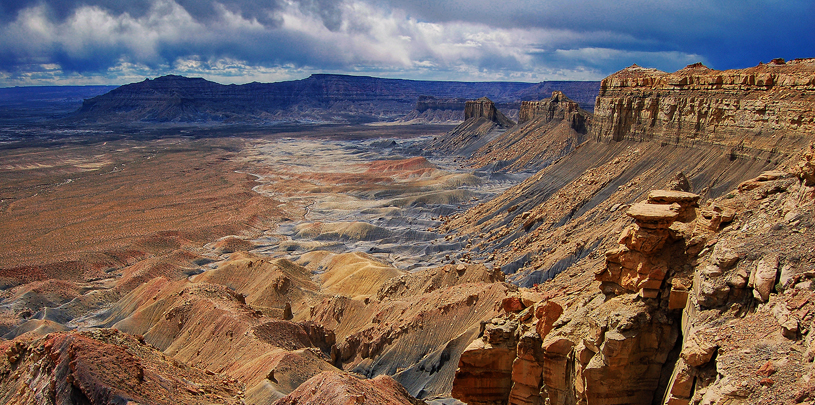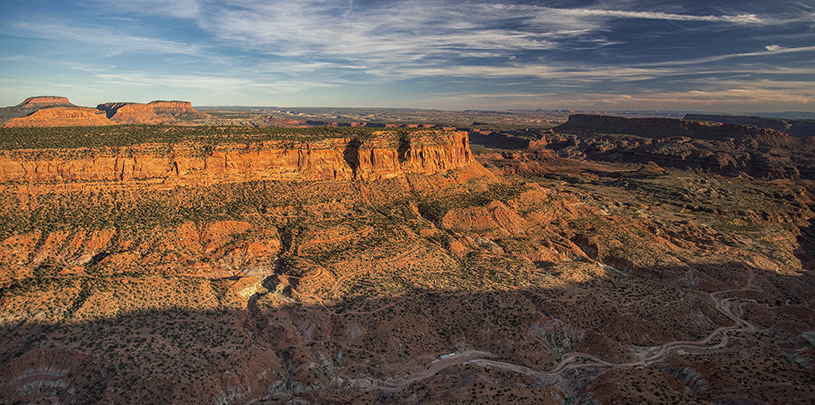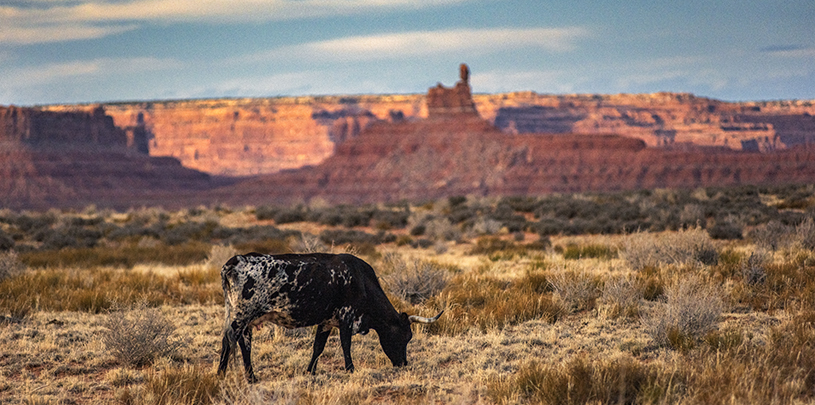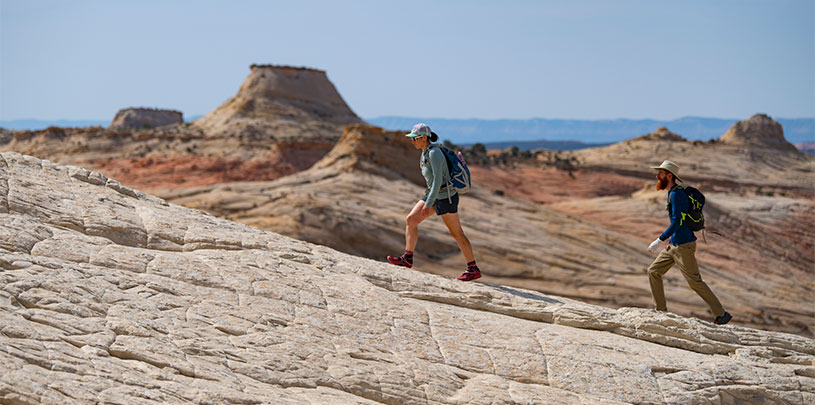
On December 4, 2017, President Trump took unilateral action to redesign the Grand Staircase. If you’ve not kept up with the news, you may be thinking, why is the Grand Canyon Trust writing about White House renovations? But the Grand Staircase at issue here is Grand Staircase-Escalante National Monument, 1.9 million acres of sculpted red sandstone, ancient cultural sites, and a treasure trove of dinosaur bones in south-central Utah. Trump attempted to shrink Grand Staircase-Escalante National Monument by almost half, removing more than 868,000 acres from the monument. The president signed a proclamation repealing and replacing the boundaries of the monument in an attempt to “unprotect” coal deposits on the Kaiparowits Plateau at the expense of one of the richest troves of Late Cretaceous fossil deposits in the world.
President Trump’s proclamation makes the outrageous claim that Grand Staircase as drawn by Bill Clinton’s White House in 1996 contained many objects that “are not unique to the monument, and some of the particular examples of these objects within the monument are not of significant scientific or historic interest.” But Grand Staircase-Escalante, once proudly heralded by the Bureau of Land Management as the “science monument,” has yielded more than two dozen species of dinosaur new to science since the monument’s designation, as well as the most complete juvenile tyrannosaur ever recovered. According to Trump’s proclamation, the coal that comingles with these dinosaurs will be available for lease on February 2, 2018.
We believe the president’s action runs counter to the law, and the Grand Canyon Trust has filed a lawsuit to challenge the president’s illegal action.
President Trump followed Interior Secretary Ryan Zinke’s final recommendations mandated by Executive Order 13792 in April, which called for the review of 27 monuments designated under the Antiquities Act since 1996. Now, Grand Staircase has fallen victim to a cynical political ploy to appease politicians in Utah who have taken the unpopular position that Grand Staircase would be better as a coal mine than a place to preserve our American heritage.
Secretary Zinke now finds himself in a worsening situation with the general public. In his confirmation hearing, he said: “the duty of the Department of Interior is to make sure we have broad consensus on what we’re doing.” President Trump’s action on Grand Staircase does not reflect consensus (88% of Utahns asked that their monuments be left alone; it placates a handful of Utah politicians with an ideological axe to grind.
Zinke’s fake review
Interior Secretary Ryan Zinke’s monuments review process was been deeply mysterious. He spared several western monuments from alteration, saying of Craters of the Moon in Idaho: “As a former geologist, I realize [this monument] is a living timeline of the geologic history of our land.” He praised Grand Canyon-Parashant in Arizona for representing “the scientific history of our earth while containing thousands of years of human relics and fossils.” And about Canyons of the Ancients in Colorado, he said: “The history at this site spans thousands of years, and the federal protection of these objects and history will help us preserve this site for a thousand more years.”
All of these statements could apply to Grand Staircase, which has all these qualities and more. It’s is home to stunning scenery, unique and beautiful geology, and 13,000 years of documented human history spanning at least 20,000 cultural sites. On top of that, it is also home to irreplaceable fossils that has yielded the discovery of 21 new species of dinosaurs previously unknown to science. This leaves us to conclude that Zinke’s review of Grand Staircase was nakedly political and not based on objective science or public sentiment. The resulting recommendation to shrink the monument inflicts a serious wound to Secretary Zinke’s conservation legacy while adding to an already busy docket in the courts for the Trump administration.
Muddy legal waters
The last time a president altered the boundaries of a national monument was 54 years ago in 1963, when John F. Kennedy subtracted 3,900 acres, but added 2,800 acres elsewhere to Bandelier National Monument in New Mexico. In the interim, our nation’s public lands laws were consolidated and streamlined by the Federal Land Management and Policy Act of 1976. The law increased and affirmed the authority of Congress to make decisions regarding the status of public lands, and it notably left the Antiquities Act of 1906 untouched. In the Federal Land Management and Policy Act itself and in the congressional record, it is clear that the Antiquities Act “deliberately provides for one-way designation authority. The President may act to create a national monument, but only Congress can modify or revoke that action.” In issuing his proclamation repealing and replacing Grand Staircase, President Trump has attempted to use authority not provided to him by the Antiquities Act of 1906, and has usurped congressional powers.
Grand Staircase-Escalante National Monument’s boundaries before the Trump repeal are also backed up in law in three other important ways.
First, Public Law 105-335, the Utah Schools and Land Exchange Act of 1998, traded out school trust lands within the boundaries of Grand Staircase, reinforcing the boundaries. At the time, it was the largest such land exchange in the lower 48 states, and it has yielded more than $340 million for the school trust, in addition to a $50 million one-time cash payment.
Second, Congress acted to legislate slight adjustments to the boundaries of the monument later in 1998 with a provision tacked on to Public Law 105-355. By making these changes, the 1996 Clinton boundaries have been further ratified by Congress.
Third, annual budget appropriations by Congress now total nearly $100 million for the management of the monument. By attempting to change congressionally set boundaries, President Trump is attempting to use powers not afforded to him under American law.
In his unprecedented action in early December, President Trump broke with tradition, using the Antiquities Act of 1906 (ordinarily used to protect outstanding public lands) to launch the most aggressive attack on protected public lands in American history. By attempting to strip national monument protection from over 2 million acres of public lands in Utah at Grand Staircase and Bears Ears in one day, he also set in motion what promises to be a long and difficult court fight. The Grand Canyon Trust and our partners have filed litigation to defend Grand Staircase-Escalante National Monument, and it’s now up to us, you, and the courts to fix the damage Trump has done by attempting to tear down Grand Staircase.





